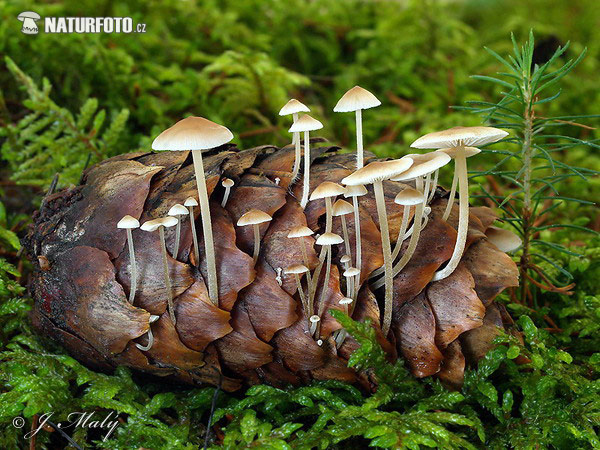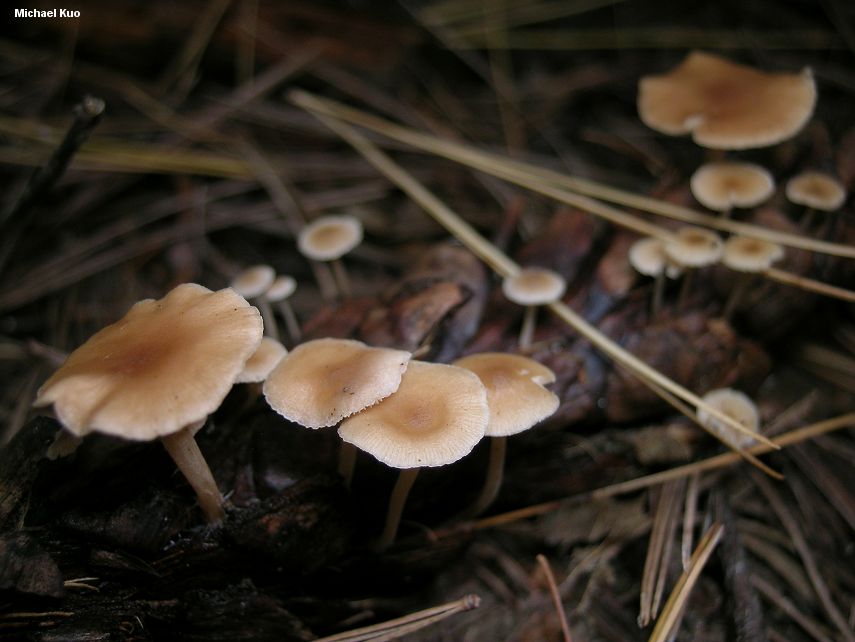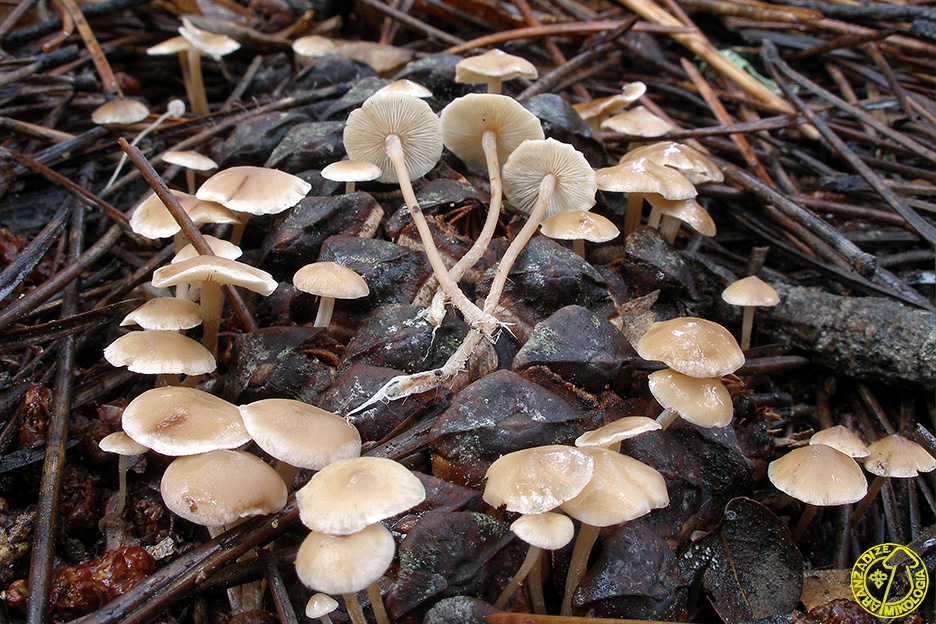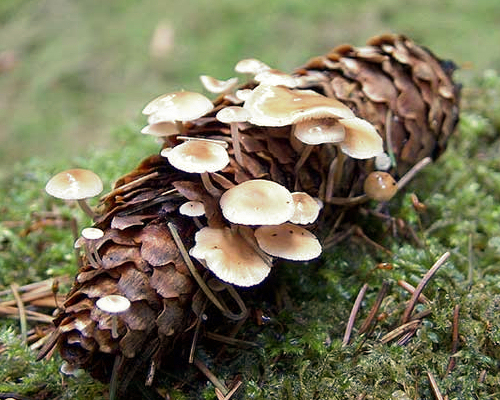Baeospora myosura
Mouse tail - Rübling ( Baeospora myosura )
The mouse tail - Rübling or Late Tang Rübling ( Baeospora myosura ) is a species of fungus in the family Schwindling relatives. Species as the "real" dispensing Velvet foot ( Strobilurus sp.) Specialized in the decomposition of pins.
- 5.1 edibility
- 6.1 Literature
- 6.2 Notes and references
Features
Macroscopic characteristics
The dünnfleischigen fruiting bodies have initially an almost hemispherical, later spread and circular hat, which reached a diameter of 0.5-2 cm. The surface is smooth with damp weather meat and brown in a drought ocher -brown color; the edge is toned brighter. On the hat skin are whitish, fleeting flakes. The first whitish lamellae have later a pale straw yellow color. They are narrow, are very dense and do not reach the stem. The cutting edges are smooth and like the rest of the vane surface dyed. The spore powder is white. The cylindrical stem is 1-4 ( -8) cm long and 1-2 mm wide. He is gray - reddish, dark brown colored back to the base and has a cartilaginous consistency. Jung is the stem fully, at the age contrast hollow. Outside he is covered with fine villi. The lower end of the handle opens into a bald, root-like extension. The light beige meat smells and tastes mild inconspicuous.
Microscopic characteristics
The 3-4.5 × 1.5-2.5 micron sized spores are colorless, elliptical, smooth and amyloid. The fibrous hat skin consists of hyphae with buckles on the septa. There are cheilocystidia that do not have crystals on the fins cutting.
Artabgrenzung
Similarity to the PTO Velvet foot ( Strobilurus sp.) Possess that occur on the same substrate. These usually appear in the spring, but some overlap may occur. They have a smooth stem, less dense lamellae and larger, inamyloide spores.
Ecology and phenology
The mouse tail - Rübling can be found in coniferous forests, especially in spruce, but also in fir-spruce and beech-spruce - fir stands. Due to the increased colonization of spruce by the people and the low demands of the fungus, this could very easily spread. The agaric lives saprotroph on cones of conifers that were dropped in the previous year or earlier. The fungus colonized in the late initial to the optimum phase Vermorschung. As the substrate serve over 90 percent of spruce cones, sometimes those of Scots pine. In rare cases, the fungus grows on cones of firs and larches. For North America, and Douglas-fir cones are specified as a substrate. Presumably it can also happen to them in Europe.
The fruiting bodies appear singly or in groups usually in late autumn. In some regions it can occur as early as September. When the weather permits, and unique discoveries from August to March and in summer are possible.
Dissemination
The mouse tail - Rübling widespread in the Holarctic. So he can be found in North America, Europe and northern Asia (Caucasus). In Europe, the fungus of Great Britain, the Benelux countries and France can be found in the west to Estonia and Belarus to the east and from Spain, Italy and Romania in the south to Fennoscandia in the north. In Germany it is up to the Central Upland Range found scattered in the lowlands. Further south come the style often regionally.
Importance
Feed value
The mouse tail - Rübling is edible, but the tough stem is unsuitable for consumption. The fungus is not productive.

.jpg)
.jpg)







